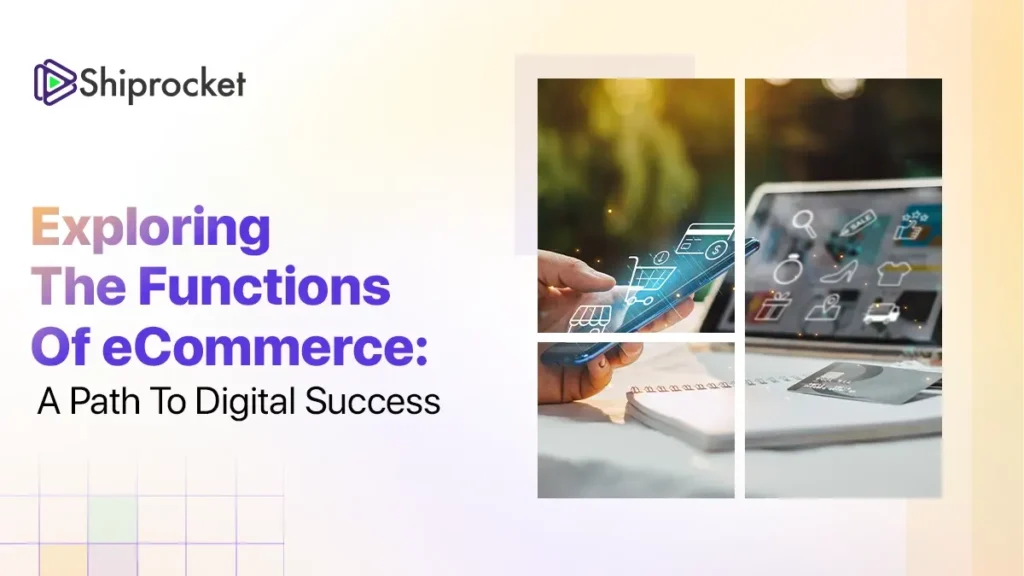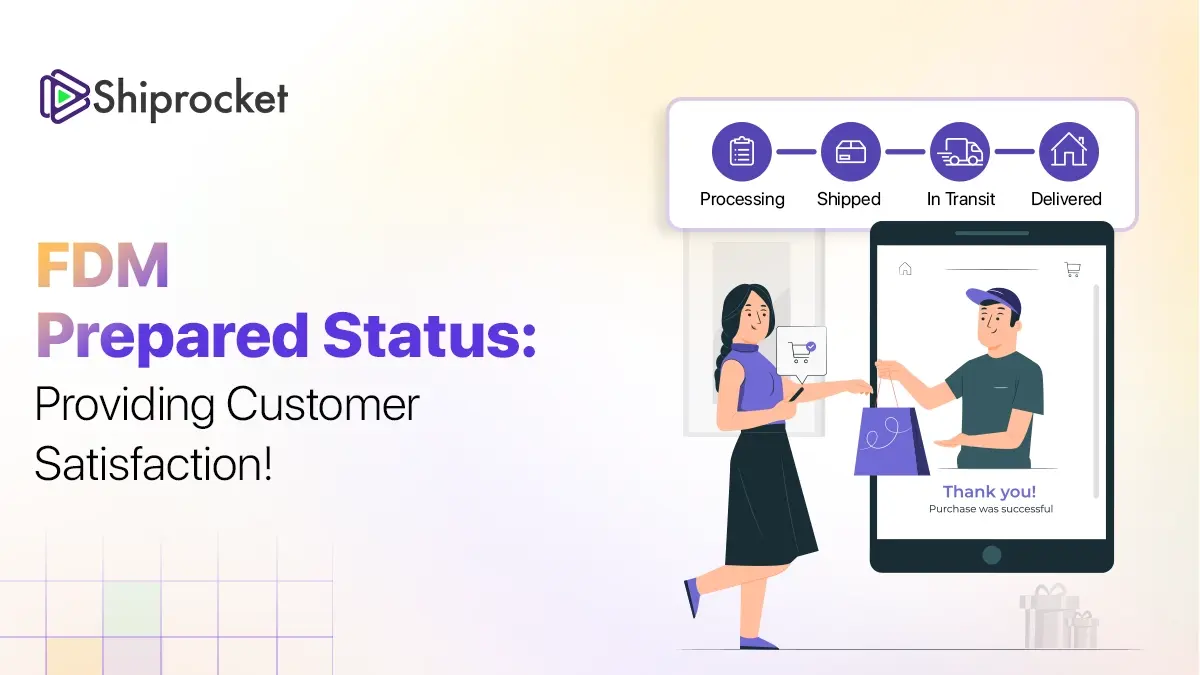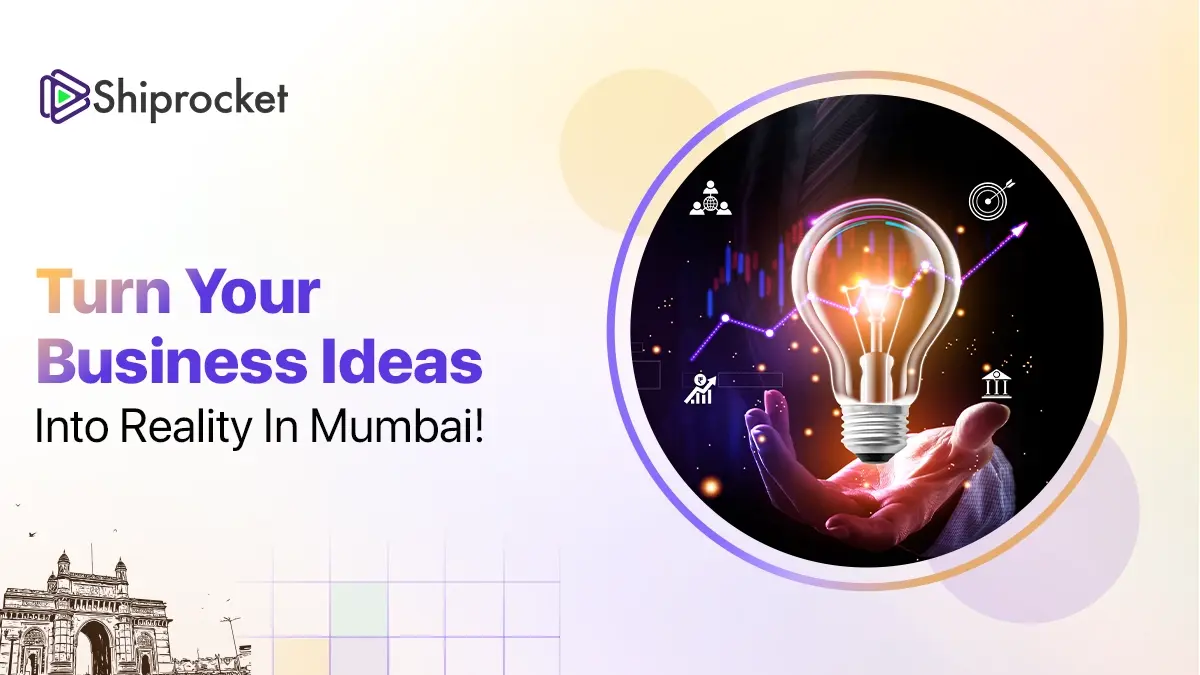Functions of eCommerce: Gateway to Online Business Success
When you conduct business electronically through online selling mediums or channels, it’s called eCommerce. The functions of eCommerce involve everything from marketing the product or service and managing inventory and selling it to providing customer service and taking customer feedback via websites or online portals. In this mode of business, you can accept payment digitally by providing various online payment options.
You may opt for any online business model, including B2C, where businesses sell directly to customers, B2B, which involves transactions between businesses, and more. However, there are many advantages and disadvantages of plunging into an eCommerce business.
As the need for such ventures is growing day by day, this article will help you understand the nitty-gritty of running an online business.

Significance of eCommerce in Today’s Market
There are about 8 billion people in the world currently, as per the 2024 global population statistics. Experts expect nearly 2.77 billion people to shop online by 2025. Moreover, they say that the user penetration can reach up to 53.9% in 2024, and may hit 63.2% by 2028. This means, in the next 4 years, around 4.5 billion people will likely prefer the eCommerce market for their shopping needs.
Looking at the numbers above, it’s clear that online businesses will continue to grow rapidly as the shopping trend shifts from brick-and-mortar stores to eCommerce ones. This trend caught fire during the Covid-19 pandemic and has only increased since then.
Customers love the ease of buying products online and the convenience that doorstep delivery offers. From buying fashion wear and daily-use products like groceries, skincare, cosmetics, kitchenware, etc. to bigger purchases like electronics and furniture, people are switching to ecommerce platforms. In fact, many services, including applying for visas, education for kids, courses, etc., are also available online. For example, online platforms like Udemy offer several courses that cover the different needs of customers. Fitness apps like HealthifyMe provide their users with expert advice through trained dieticians and help them lead a healthy lifestyle.
Buyers don’t have to step out of the house to avail products or services nowadays, all thanks to the flourishing of eCommerce. At the same time, online business connects sellers with global customers and helps expand the business’s reach massively. As a result, eCommerce businesses are thriving and making huge profits.
Functions of eCommerce
Although the sales take place on the brand’s eCommerce website, you need to integrate several other functions to run a smooth online business. Here are the main functions of eCommerce:
Marketing
Marketing is an important aspect of any kind of business, be it a physical store or an eCommerce website. The foundation of good marketing is conducting in-depth research to develop a compelling brand strategy that helps your product sell to the masses. Digital marketing is one of the most impactful functions of eCommerce as it helps you promote your products or services to a wide audience, without the borders segregating and limiting you.
Marketing digitally involves activities like running online ads through Google or social media platforms, influencer marketing, emailing offers, and many more. These activities communicate your brand identity well to the prospects and make them aware of your offerings. This will finally result in customer acquisition and conversions.
Supply Chain Management
Every product needs to move from your warehouse to your customer’s location. Customers expect lightning speed deliveries today, and for that, you need an efficient supply chain. Therefore, creating a systematic supply chain is another integral part of managing an eCommerce business.
The functions of eCommerce include effectively administering this flow of inventory from the seller to the buyer, ensuring the product safely reaches your customer in perfect condition. You can do this with the help of various efficient supply chain management software available in the market. They will help you monitor and maintain your inventory without errors and delays.
Financial Management
Finance is like the backbone of a business, without which it may collapse. Hence, financial management is among the crucial functions of eCommerce that strengthen your online business’s ecosystem. You need to manage and gate-keep your costs at every level of your business to make considerable profits.
A financial management system helps you optimise your expenditure by tracking your sales performance. You get a layout of costs incurred on various operations like production, procurement, marketing, etc., and the revenue generated from the sales.
This helps you cut your costs wherever possible for better profit margins.
Advantages of Engaging in eCommerce Ventures
A physical store can be a costly affair and may have limited capacity to expand as compared to online ventures. Starting an eCommerce business has a bright side to it and may serve many added advantages:
Global Connectivity and Reach
An online business has no boundaries to it. You can expand and reach your prospective audience worldwide through your eCommerce store. It gives you the opportunity to tap into a wide customer base within and outside the country. You’re no longer limited to one city or area or are dependent on a confined customer base.
Round-the-Clock Services
You’re always connected to your buyers as they can shop for your products from anywhere in the world. The functions of eCommerce allow you to service your potential and existing buyers at any time through your website and customer service.
Get Started with a Small Budget
It’s mostly quite expensive to start a business and set up physical stores in multiple areas, cities, or countries. Building a physical presence in so many locations is especially very difficult for startups. It takes considerable time and includes huge costs related to rent, logistics, management, and maintenance of these outlets.
However, eCommerce allows businesses of any size to quickly create an online platform or store with minimal investment.
Analytics for Customer Insights
The functions of eCommerce help you serve your customers better as you can track their activity and gauge their buying behaviour using data and insights from your website. The analytics of an eCommerce store give you the power to do that. You can analyse the demographics, preferences, etc., of your buyer and other metrics like the click-through rate and more to understand which products have a higher potential to sell with a particular customer or segment.
Highlighting Your Bestsellers
Another advantage of eCommerce is that you can put your best-selling products in the spotlight. Customers land on your website as they get attracted to these hot selling items and eventually explore other products. This will increase your chances of making more sales and winning customer loyalty by providing them with a worthy customer experience.
Remarketing Tactics
Customers often add products to their carts and do not check out. They leave the products there and usually forget about them. The functions of eCommerce allow businesses to remarket those products to such customers. You can fetch their email address through a lead magnet using the plugin widget on your website and later connect with these customers. You can encourage them to buy by emailing that they forgot a product in their cart or offering checkout discounts. You may promote the same product that they added to their cart or even show similar ones.
Boost Impulsive Buying
Online shopping and impulsive buying often go hand-in-hand. You can use appealing product images or videos to attract an impulsive shopper. Select a few products and put them out at discounted prices as limited-time offers to create a sense of urgency. Customers often tend to get influenced by these tactics and make quick purchase decisions based on their emotions or immediate desires. Analyse your impulsive buyers’ responses. If they find these offers compelling, they might continue engaging with your business on search engines and social media. It keeps your product and brand visible and at the top of the customers’ minds, increasing their likelihood of purchasing it.
Instant Customer Service
It’s possible to instantly respond to your customers at any hour through online customer support. It allows you to promptly resolve any queries or issues that a customer might have while or after making a purchase. Your immediate response can motivate the customer to quickly decide and buy the product. It helps you hike your sales and please your customers at the same time.
Potential Drawbacks to Consider in eCommerce
Starting your ecommerce business may come with a few challenges:
Intangibility in Buying Experience
This problem is specific and limited to online shopping. Unlike in physical stores, customers can’t touch or feel the product while buying online. All they have is product pictures and descriptions to make a purchase decision. They may be unsure of the quality or fit of the product, which can hinder their decision.
Raging Competition
Many eCommerce stores deal in a specific niche by offering a single kind ofs product. Therefore, the competition is very high among such online businesses. Customers have more vendors to choose from, which compels eCommerce businesses to lower their prices and give customers lucrative offers or discounts to attract them.
Technological Expenses
You need to use advanced eCommerce technology to stay ahead of the competition and serve your customers better. If your customers find a lag in your website or have a bad experience using the portal, they may quickly switch to another eCommerce store. So, you require a high-performing website, which can be costly.
Delivery Delays
eCommerce services provide customers with the comfort of receiving products at their doorstep, but they also sometimes tend to make delayed deliveries. Customers expect their orders to arrive on the expected delivery time. However, there can be potential delays in the process, which can disappoint the customer and spoil their experience. You may even lose your customers due to such occurrences.
Revenue Generation in eCommerce
Revenue generation in eCommerce involves the implementation of several key strategies. Online retailers and businesses need to implement this to maximise their income from digital sales channels. It’s a multifaceted aspect of eCommerce that requires attention to product quality, marketing, diversification of revenue streams, and customer experience. Your online business’s success and growth depend on capitalising on these areas.
To start with, eCommerce businesses often focus on improvising their product offerings and user experience to attract and retain customers. They optimise their website design, enhance their product quality, and provide customers with a user-friendly platform to get higher conversion rates.
Another method of revenue generation involves employing effective digital marketing strategies like Search Engine Optimisation (SEO), social media marketing, and email campaigns. These strategies can dramatically increase your visibility and bring more traffic to your eCommerce website, in turn boosting your sales.
You can also diversify your revenue streams. You can do this by introducing subscription services, selling digital products, or leveraging affiliate marketing. Having multiple revenue streams reduces the risk and increases your business’s stability.
Furthermore, you can optimise your pricing strategies and provide promising customer service to encourage repeat business from your customers and enhance their lifetime value. It directly contributes to your revenue growth and sustainability.
eCommerce Trends in 2024
Many new trends are emerging in the eCommerce sector as it expands its horizons each year. Let’s look at some of the latest developments in 2024:
Augmented Reality (AR) Shopping Experiences
Augmented reality technology provides customers with an immersive shopping experience. This brings customers closer to the experience of interacting with tangible products they get in physical stores. It enables them to visualise products in a real-world context, almost like a 3D view. Customers can make better purchase decisions with this new feature. For example, Ikea has been effectively using augmented reality technology in its app for the past few years, which proves that this new feature and trend is here to stay for a long time.
Even the leading eyewear brand, Lenskart, utilises AR to provide a more real eyeglass shopping experience to its customers. They’ve added a virtual try-on feature that allows users to see and judge the look of different eyeglass styles on their faces before buying one. This reduces the uncertainty for them and makes the interaction with the website a fun-filled experience.
Even cosmetics brands like L’oreal and Laura Mercier are integrating AR to show customers how different shades of lipsticks or foundations look on them. This trend is catching on and more eCommerce businesses are inclining towards it.
Social Commerce
Nearly 74% of consumers make their buying decisions based on what they see on social media. This implies that the importance of a strong social media presence is growing due to the shift in consumer behaviour. Besides using social media to make purchase decisions, people are showing more trust in the security of buying products from these social spaces. The social commerce market generated an estimated USD 571 billion in revenue in 2023, which the experts expect to grow at a 13.7% compound annual growth rate from 2023 to 2028. The revenue of this segment may reach a staggering USD 1 trillion in this forecast period.
2024 is likely to see a hike in this trend as social media platforms are enhancing their shopping features. Consumers spend significant hours browsing and scrolling through these social media platforms. So, they find it easy to tap into the social media shops and make purchases. They feel more confident about the security of transactions on these platforms today. Hence, eCommerce businesses are capitalising on this growing trust and using social commerce to sell products. This means not only establishing a strong presence on social media but also optimising the purchasing process within these platforms to cater to the preferences of the ever-growing audience.
Customer Expectations for Same-day or Next-day Delivery
Consumers are getting more and more impatient with delivery timeframes with the introduction of two-day delivery by many big eCommerce players like Amazon, Myntra, etc. They now expect same-day or next-day delivery, which is the latest trend in the industry.
This growing trend towards superfast delivery is not just a temporary phase. 41% of consumers in India are ready to pay an additional fee for the convenience of same-day delivery. Grocery apps like Blinkit have encashed this opportunity by offering 11-minute delivery for daily-use products. Online businesses are increasingly adjusting to this trend to remain competitive as rapid delivery has become the new norm.
Eco-Friendly eCommerce
73% of global consumers say that they are willing to alter their consumption habits to reduce the environmental impact. This data highlights the growing consumer focus on sustainability and eco-friendliness in recent years. This trend is likely to intensify in 2024 as customers look for eco-friendly products and packaging from brands around the globe. More customers are becoming eco-conscious and prefer to buy from eCommerce businesses that offer sustainable options and work hard to reduce their carbon footprint. For example, the food delivery giant Swiggy recently rolled out a new ‘smart saver’ eco-friendly delivery option, where customers can opt to bunch up their orders with multiple orders.
Environmental concerns are at the forefront and a top priority for many customers. Therefore, eCommerce businesses are moving towards this trend rapidly.
Product Videos
After putting up attractive, high-resolution product images, the next big thing in the eCommerce industry is captivating customers with high-quality product video. It offers buyers an immersive experience, and helps highlight more features and usability of products.
Thoughtfully curated videos are appealing to customers and also evoke their emotions by delivering an impactful message that text descriptions may never be able to convey. In fact, a recent study states that viewers remember 95% of a message delivered via video, and 72% of consumers prefer videos to learn about new products or services.
AI Redefining eCommerce Marketing
Artificial intelligence (AI) is a hot trend, and it’s constructively seeping into the eCommerce industry. AI integration is supposedly one of the raging eCommerce trends in 2024, as the technology is enormously helpful in optimising many online business operations. For example, brands are invigorating chatbots on their websites to answer common queries that a customer might have while making a buying decision. They can chat with this bot anytime to clear their doubts. It provides businesses with 24/7 availability and helps influence their prospective customers’ decisions.
Moreover, AI algorithms have the ability to analyse huge amounts of data to predict customer behaviour, recognise trends, and optimise marketing strategies in real time. Businesses are falling majorly for the trend as AI gives them the ease to automate routine marketing tasks, curtail costs, streamline operations, and distribute resources more efficiently. According to a recent report, 54% of organisations say that AI enables to achieve cost efficiency and savings.
Conclusion
The functions of eCommerce are elaborate and offer convenience, cost-effectiveness, and sustainable growth in businesses. These functions come with considerable advantages and a few disadvantages for new eCommerce ventures stepping into the industry. You can reach customers globally, be available for their online assistance 24/7, get customer insights and analytics, and do much more with your online portals. However, the success of your online business depends upon the revenue you generate by focusing on your product quality, marketing, customer experience, and diversification of revenue streams. Moreover, the competition is rising in the eCommerce industry, so staying abreast of emerging trends can help you combat it.





